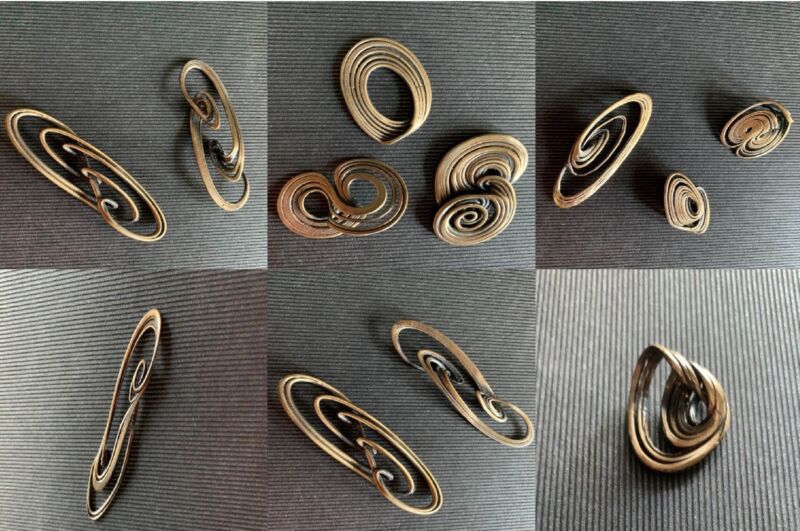These scientists created jewelry out of the striking shapes of chaos theory

Enlarge / Chaotic shapes 3D-printed in bronze represent the first step in the transformation from chaos to manufacturable forms. (credit: F. Bertacchini/P.S. Pantano/E. Bilotta)
A team of Italian scientists has figured out a way to turn the striking, complex twisting shapes of chaos theory into actual jewelry, according to a new paper published in the journal Chaos. These pieces aren't simply inspired by chaos theory; they were directly created from its mathematical principles.
"Seeing the chaotic shapes transformed into real, polished, shiny, physical jewelry was a great pleasure for the whole team. Touching and wearing them was also extremely exciting," said co-author Eleonora Bilotta of the University of Calabria. "We think it is the same joy that a scientist feels when her theory takes form, or when an artist finishes a painting."
The concept of chaos might suggest complete randomness, but to scientists, it denotes systems that are so sensitive to initial conditions that their output appears random, obscuring their underlying internal rules of order: the stock market, rioting crowds, brain waves during an epileptic seizure, or the weather. In a chaotic system, tiny effects are amplified through repetition until the system goes critical. The roots of today's chaos theory rest on a serendipitous discovery in the 1960s by mathematician-turned-meteorologist Edward Lorenz.